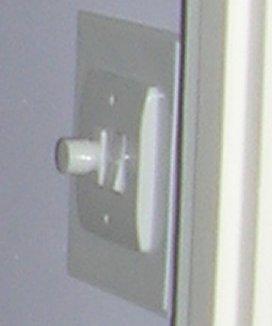You are using an out of date browser. It may not display this or other websites correctly.
You should upgrade or use an alternative browser.
You should upgrade or use an alternative browser.
Can i insulate over halolite downlight insulation guards?
- Thread starter DCM1
- Start date
Sponsored Links
Have you got the holes in the ceilings yet, or will you be able, in the nick of time, to avoid making that mistake?We are installing new downlights in our en-suite (3) and our main bathroom (2).
Just one example:
http://www.rselectricalsupplies.co.uk/switch-module-push-onoff-md9001_7788[/QUOTE]
Ok, so how does that make the finished product look?
I.e. if we bought the following product from B&Q (i.e. a double rotary dimmer switch):-
http://www.diy.com/departments/vole...tary-dimming-250w-dimmer-switch/109119_BQ.prd
and then replaced the rotary dimmer module with the on/off switch module (as linked in your post above), I take it that would solve the problem “behind the scenes” so to speak i.e. the bit of the light switch that we don’t actually see. However, what does the front of the double switch then actually look like? Does it end up looking like that industrial set up in the attached picture below?
Or can we get a finished product that would have a nice chrome rotary dimmer switch facing (on one side of the double switch), and the (exact same chrome finished) on/off switch facing (on the other side of the double switch)?
If so, presume we then need to purchase the following product to cannibalise the on/off switch facing in the exact same chrome finish?
http://www.diy.com/rooms/colours-ch...ght-switch-1-gang-2-way-sp-10ax/173655_BQ.prd
If this is the case, then how on earth do we get the on/off switch into the double dimmer casing?
Still very confused!!!
Have you got the holes in the ceilings yet, or will you be able, in the nick of time, to avoid making that mistake?We are installing new downlights in our en-suite (3) and our main bathroom (2).
Yes there are holes in the ceiling and we're happy with that!!!
Sponsored Links
If this is the case, then how on earth do we get the on/off switch into the double dimmer casing?
Still very confused!!!
Buy a double dimmer in teh style that you prefer.
Pull off one dimmer knob. Underneath there will be a nut that you undo.
You can then remove the dimmer and are left with a hole in the plate.
Insert the dummy switch module (see link above for example) and put it in the hole. Do up the securing nut and put on the knob that you removed in step 1.
Then you have what looks like a double dimmer with matching knobs. One side is the dimmer, the other side is a push on/off switch.
It's not hard.
If this is the case, then how on earth do we get the on/off switch into the double dimmer casing?
Still very confused!!!
Buy a double dimmer in teh style that you prefer.
Pull off one dimmer knob. Underneath there will be a nut that you undo.
You can then remove the dimmer and are left with a hole in the plate.
Insert the dummy switch module (see link above for example) and put it in the hole. Do up the securing nut and put on the knob that you removed in step 1.
Then you have what looks like a double dimmer with matching knobs. One side is the dimmer, the other side is a push on/off switch.
It's not hard.
Ah ok, well that does now start to make sense!!
So when we've done that, how does the push on/off switch actually work - I know that the dummy switch module will ultimately control this, but when we come to actually trying to use this, what do we do? i.e. do we simply push the "dummy" dimmer knob inwards and this will activate the fan (and equally push the "dummy" dimmer knob inwards again to turn it off), or do we have to push the "dummy" dimmer knob and also turn it fully to the right? If the latter, and we only turn it part way, what happens?
Apologies, I know these questions are bread and butter to you guys but as you can tell I'm a bit of a dummy when it comes to electrics!!!
It is very annoying if you don't read the responses.
. One side is the dimmer, the other side is a push on/off switch.
It is very annoying if you don't read the responses.
. One side is the dimmer, the other side is a push on/off switch.
Apologies, I did read that, I was just really looking for clarity.
I thought that was a valid question though! I'm presuming that the extractor fan is then controlled by pressing the dimmer rotary knob in to switch on and in to switch off - I hope that's right!
In terms of compatibility, does the dummy switch module linked to earlier universally compatible or is it a bit trial and error?
DIYnot Local
Staff member
If you need to find a tradesperson to get your job done, please try our local search below, or if you are doing it yourself you can find suppliers local to you.
Select the supplier or trade you require, enter your location to begin your search.
Please select a service and enter a location to continue...
Are you a trade or supplier? You can create your listing free at DIYnot Local
Sponsored Links


